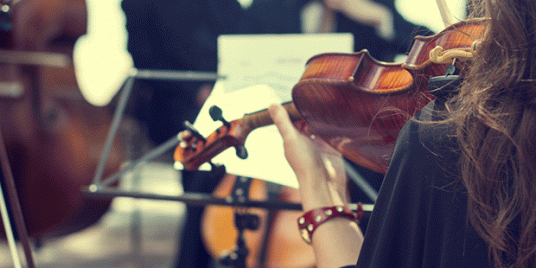The acoustic design and capabilities of the new Music Center are considered to be among the best of any university music facility in the country. The acoustic design of the center was overseen by Acoustical engineer Ron McKay of McKay Conant Brook, Inc., of Westlake Village, California. Acoustic features include:
Custom-designed rooms
The acoustics of the practice and performance spaces run a range from very bright, "live" sound to very "dry" sound. For example, the hardwood floors and high ceiling in the 60-seat performance studio produce a very full, bright sound while the cushioned walls and carpeted floor in the percussion studio dampen sound reflection.
Sound Isolation
Great care has gone into isolating all practice and performance spaces from external and adjacent noise. Among the sound isolation features are:
- Insulated walls that are all at least 10 to 14 inches thick and, in one case, 30 inches thick
- "Floating" concrete floors that rest on supports keeping them roughly an inch above the main foundation to isolate and control sound-driven vibration
- Isolated electrical and ventilation systems (adjoining rooms are never linked directly to each other)
- Oversized ventilation ducts outfitted with adjustable baffles to diminish the sound of airflow
- Non-parallel walls that reduce unwanted reverberation.
The centerpiece of the new complex is the 396-seat Recital Hall, which can literally be tuned to customize acoustics for different styles of music. Inset chambers may be exposed or covered by curtains to brighten or extend sound and a movable canopy suspended above the stage may be raised or lowered as needed. To counter unwanted reverberation, the hall has been constructed with contoured interior walls and with specially designed seats that have perforated bottoms to absorb sound when not in use. Other features include an orchestra pit floor that can be raised or lowered as needed, state-of-the-art audio and video equipment, and audio and video links to an adjoining recording studio and classrooms.


